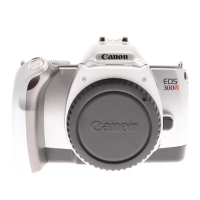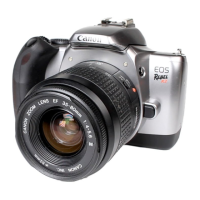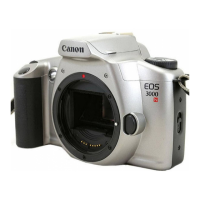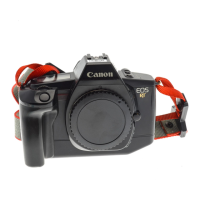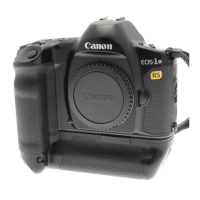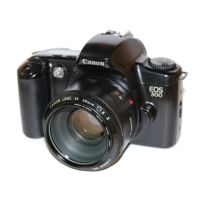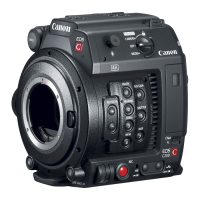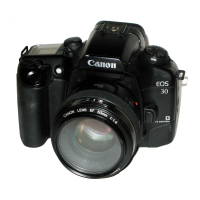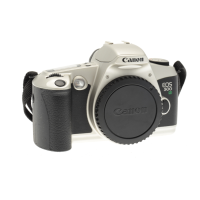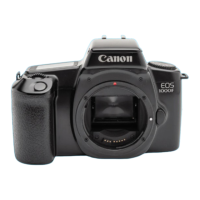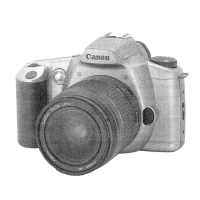Do you have a question about the Canon EOS Rebel G and is the answer not in the manual?
Securely attach the camera neck strap for safe handling and portability.
Guide to inserting batteries and verifying camera power status for operation.
Procedures for safely attaching and removing camera lenses to the camera body.
Explains the functions of the shutter button, including half-press for focus and full press for exposure.
Step-by-step instructions for loading film into the camera and unloading exposed film.
Simple mode for automatic picture-taking, ideal for any subject or situation.
How the built-in flash automatically activates for dim or backlit subjects.
How to enable the red-eye reduction feature to minimize red eyes in flash photos.
Explains the automatic AF-assist beam function for focusing in low light.
How the camera automatically selects single or continuous shooting modes.
Mode designed to blur backgrounds for prominent human subjects.
Mode optimized for capturing scenery, sunsets, and wide outdoor shots.
Mode for detailed macro photography of small subjects like flowers and insects.
Mode ideal for capturing fast-moving action and sports photography.
Mode for shooting human subjects at sunset or night, balancing flash and slow shutter speed.
Instructions for using the self-timer to capture photos with a delay.
How to imprint date or time data onto photographs using the QD model feature.
Procedures for setting the camera's internal date and time for QD models.
Guide for replacing the battery that powers the quartz date function.
How to manually select or allow automatic selection of the camera's focusing points.
Technique for focusing on subjects not directly covered by active focus points.
General-purpose mode where the camera automatically sets shutter speed and aperture.
How to alter the automatic shutter/aperture combination while maintaining exposure value.
Mode to set shutter speed manually; camera sets aperture for correct exposure.
Mode to set aperture manually; camera sets shutter speed for correct exposure.
Mode for full manual control over shutter speed and aperture for precise exposure.
Automatically sets exposure for a wide depth of field between near and far subjects.
How to use the camera's built-in flash in various shooting modes for better illumination.
Information on the operational range of the built-in flash with different lenses and ISOs.
Explains warning displays related to flash exposure and countermeasures.
Techniques for achieving accurate exposure in high-contrast scenes using AE lock.
How to intentionally make photos darker or brighter by adjusting exposure.
Automatically captures multiple frames with varying exposures for optimal results.
Procedure for long exposures where the shutter remains open while the button is pressed.
How to expose a single frame multiple times for creative effects without advancing film.
Manually setting the camera's ISO sensitivity based on the film used.
Option to disable the audible beep that confirms focus achievement.
How to manually rewind the film roll before reaching the end.
Overview of the Evaluative-Through-The-Lens autoflash system for external Speedlites.
Basic steps for using an EX-series Speedlite with the camera for flash photography.
Using high-speed sync for fill-flash with fast shutter speeds to maintain background blur.
How to lock flash exposure for a specific portion of the scene for consistent lighting.
Information on compatibility and operation with older TTL or A-TTL Speedlites.
Definitions of essential photographic terms like shutter speed, aperture, ISO, and depth of field.
Common problems and their solutions, with page references for quick fixes.
Explains camera warnings for underexposure or overexposure and how to correct them.
A table summarizing which features are available across different camera modes.
Details on different autofocus modes and film advancement options.
Listing and brief description of optional accessories compatible with the camera.
Important guidelines for camera care, maintenance, and safe operation to prevent damage.
Information regarding the camera's DL123A lithium batteries, their usage, and checks.
Indicators and implications of low battery power on camera functions.
Advice on handling and protecting camera lenses to prevent damage.
Technical details and specifications of the camera model.
| Type | 35mm SLR |
|---|---|
| Lens Mount | Canon EF |
| Viewfinder | Eye-level pentamirror |
| Power Source | 2 x CR123A lithium batteries |
| Dimensions | 145 x 92 x 62 mm |
| Shutter | Vertical-travel focal-plane shutter |
| Shutter Speed | 30 - 1/2000 sec, Bulb |
| Autofocus | TTL-CT-SIR with a CMOS sensor |
| Metering | 6-zone |
| Flash | Built-in pop-up flash, hot shoe |
| Film Transport | Automatic |
| Exposure Control | Program AE, Shutter-priority AE, Aperture-priority AE, Manual |
| Weight | 370 g (body only) |
